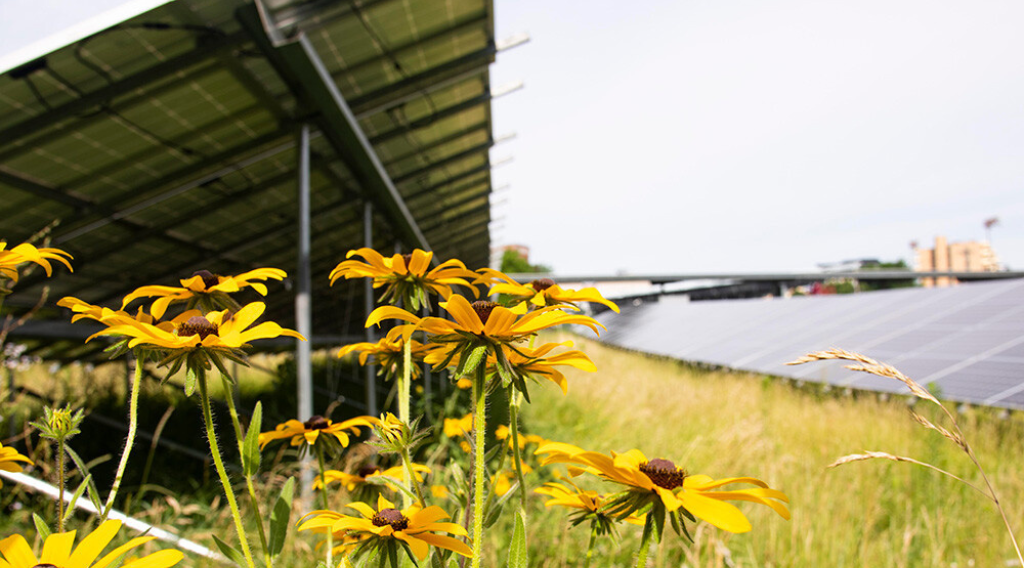
Photo courtesy of Jill Stuckey
The second case study is now available from a groundbreaking project to establish the first science-based stormwater and water quality standards for solar farms. The Great Plains Institute is helping lead the Photovoltaic Stormwater Management Research and Testing (PV-SMaRT) project along with the National Renewable Energy Laboratory, Fresh Energy, and the University of Minnesota. PV-SMaRT is funded by the US Department of Energy’s Solar Energy Technology office.
GPI is working with Fresh Energy to develop a series of case studies highlighting three of the five sites being studied as a part of the project. SolAmerica Energy’s Carter Farms solar site in Plains, Georgia, is one of the PV-SMaRT project sites and the focus of the second case study. The solar installation on the site boasts 3,892 solar panels that generate 1.3 megawatts of electricity.
“This site in Georgia helps bring both scientific validity to the modeling and runoff coefficients, adding diversity of soil types, hydrology, and land use. It also helps with developing regulatory, permitting, and project best practices that flow from the science,” stated Brian Ross, vice president at GPI.
Located on the lands of former President Jimmy Carter, SolAmerica’s Carter Farms solar site contains three different seed mixes. As discussed in the blog introducing the Ramsey, Minnesota case study, the type of soil affects the rate of stormwater infiltration. Pollinator ground cover enhances the rate of infiltration. Cultivating three mixes of ground cover allows researchers to test how different types of ground cover affect stormwater infiltration.
At this solar site, the soil type is a one-to-one ratio of sandy and clay soils. Because of the partially clay soil, which inhibits infiltration, this site does experience some runoff. Compared to the other study sites in the PV-SMaRT project, the runoff that occurs at this site is considered moderate.
Read the case study and learn more about the Carter Farms site, the research process, the site benefits, and stakeholder feedback on Fresh Energy’s website.
More about this groundbreaking project can be found on the National Renewable Energy Laboratory’s website.


